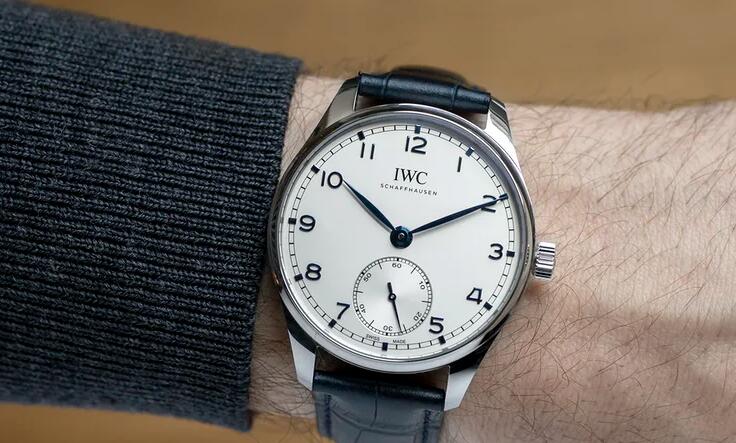The Replica IWC Portugieser Automatic with date display debuted back in 2004 and has always been furnished with one of the biggest and most powerful automatic movements. The 52010 caliber as we know it today shows how far movement architecture has come since the original Portugieser from the 1930s used a pocket watch movement in its wristwatch case.
The most sporting member of the Portugieser family from IWC Schaffhausen, the Portugieser Automatic, has a powerful and masculine aura. Find out more. For 60 years now, the power driving IWC’s automatic in-house movements has come from the pawl-winding system developed by Albert Pellaton. Find out more.
To mark the start of the new millennium, IWC decided to write a new chapter in the history of Schaffhausen in the year 2000: the IWC Portugieser Automatic 2000 (Reference 5000), with a completely newly designed movement. The 5000 calibre contained a power reserve of 7 days and the Pellaton winding system.
Ticking away inside the Portugieser Automatic 40 (Ref. 3583) is the IWC-manufactured 82200 calibre. The robust, high-quality automatic movement has a Pellaton winding system with components made of virtually wear-free ceramic, which builds up a power reserve of 60 hours. A sapphire glass back provides an unimpeded view of the decorated movement.
The IWC Portugieser Automatic 40mm. 40.4 x 12.3mm case with 30 meters of water resistance and see-through caseback. In-house caliber 82200 automatic movement beating at 28,800 vph, 60 hours of power reserve, running in 31 jewels.
From a design standpoint, the watches below, with their clean dials and sub-seconds, are about as close to the vintage ref. 325 as any IWC I have seen recently. It’s clear that IWC is taking this collection, long defined by its oversized case, in a somewhat different direction. Nonetheless, it’s a move that I suspect HODINKEE readers are going to like a lot.
The Portugieser’s story stands out for having been pushed along at first by a special request. Two Portuguese gentlemen, the story goes, asked IWC to make for them a large wristwatch with the chronometric qualities of a pocket watch. This was in the late 1930s, when IWC’s reputation was mainly based on its status as a maker of accurate pocket watches – which, of course, used large and robust hand-wound calibers that could easily be regulated within the strict chronometric tolerances required to achieve consistent accuracy. IWC’s solution was to case up one of its pocket watch movements within a large-for-its-time wristwatch case, and the watch that would go on to be known as the Portugieser was born.
What we’re looking at today is a 40mm automatic Portugieser that brings all of the design elements that I most associate with the line to the table: a round case shape, a dial with legible Arabic numerals, and a railroad chapter ring. But it does this in a size that aligns with what many watch enthusiasts seem to want from a dress watch today. Today’s Portugieser also strikes me as wearable on smaller wrists, including women’s wrists, in a way that I don’t think other versions of the Portugieser have been. The model that we are looking at here is 40.4mm in diameter and 12.3mm thick, though IWC is also making two new 42mm references with seven days of power reserve.
I wouldn’t necessarily say that the newest 40mm Portugieser is a small watch, though. Its relative thickness compared to its diameter makes it a watch that you feel on your wrist, even if it’s definitely dressy enough to cover you for business and formal occasions. The absence of a date, the quite beautifully applied numerals in gold, gold-plate, rhodium-plate, or blue (one of my favorite parts of the design and one that reminds of the gold numerals on my own old IWC Caliber 89), and the elegant feuille hands all add up to a wristwatch that feels timeless. But I also get the sense that the IWC Portugieser Automatic 40mm could easily serve as an everyday watch – and I dare say as a one-watch collection – thanks to its aforementioned wrist presence.
iwc portugieser automatic
